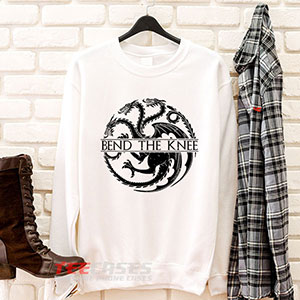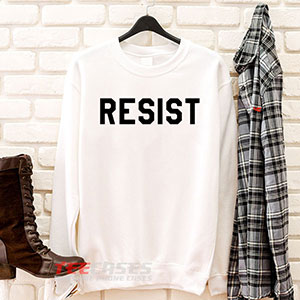Sweatshirt
Transform Your Sweatshirt into a Stylish Jacket: A Step-by-Step Guide
Are you tired of your old sweatshirt sitting at the back of your wardrobe, collecting dust? Well, we have the perfect solution for you! In this article, we will guide you through the process of turning your plain sweatshirt into a trendy jacket that will make heads turn. With just a few simple steps and some creative flair, you can transform your boring sweatshirt into a fashionable statement piece. So, grab your sewing kit and let’s get started on this exciting DIY project!
Before we dive into the details of how to make a jacket from a sweatshirt, let’s take a moment to understand the process. By repurposing your sweatshirt, you not only save money, but you also contribute to reducing waste and embracing sustainability. It’s a win-win situation! Whether you’re a novice or an experienced DIY enthusiast, this guide will walk you through the steps to create a one-of-a-kind jacket that reflects your personal style.
Choosing the Perfect Sweatshirt
Summary: Find the ideal sweatshirt to transform into a jacket by considering the fabric, size, and design.
Sweatshirts
Sweatshirts
Sweatshirts
Sweatshirts
The first step in creating your sweatshirt jacket is to choose the perfect sweatshirt for your project. Look for a sweatshirt that is in good condition, with minimal wear and tear. The fabric should be sturdy enough to withstand the transformation process. Consider the size of the sweatshirt as well. If you want a fitted jacket, choose a sweatshirt that is slightly larger than your normal size. For an oversized look, opt for a larger sweatshirt. Lastly, think about the design of the sweatshirt. Solid colors or simple patterns work best for this project, as they provide a blank canvas for customization.
Consider the Fabric
When selecting a sweatshirt, pay attention to the fabric composition. Choose a sweatshirt made from a durable material, such as cotton or a cotton blend. These fabrics are easier to work with and will hold up well during the transformation process. Avoid sweatshirts made from flimsy or stretchy fabrics, as they may not provide the structure needed for a jacket.
Size Matters
The size of the sweatshirt will determine the fit of your jacket. Decide whether you want a fitted jacket or an oversized one. If you prefer a fitted look, choose a sweatshirt that is slightly larger than your normal size. This will give you enough room to work with during the transformation process. If you’re aiming for an oversized jacket, opt for a sweatshirt that is a few sizes larger than what you would normally wear. Keep in mind that oversized jackets tend to be more relaxed and casual.
Design Considerations
When it comes to the design of the sweatshirt, simplicity is key. Look for sweatshirts in solid colors or with minimal patterns. This will provide a clean canvas for customization and allow your creativity to shine. Avoid sweatshirts with complex designs or logos, as they may be difficult to incorporate into the jacket. Remember, you want your jacket to be a fashion statement, so choose a sweatshirt that will allow you to achieve that.
Sweatshirts
Sweatshirts
Sweatshirts
Sweatshirts
Gathering the Necessary Materials
Summary: Prepare a list of materials required for this project, including scissors, thread, buttons, and any additional embellishments.
Before you start transforming your sweatshirt into a jacket, gather all the necessary materials. This will ensure that you have everything you need at hand and make the process smoother. Here’s a list of materials you will need:
Scissors
A good pair of fabric scissors is essential for this project. Make sure they are sharp and able to cut through the sweatshirt fabric easily. It’s important to have a clean and precise cut to achieve the desired results.
Thread
Choose a thread color that complements your sweatshirt. If you want a subtle look, go for a thread color that matches the fabric. For a contrasting effect, opt for a thread color that stands out. Make sure you have enough thread to complete the entire project.
Needles
You will need both hand-sewing needles and sewing machine needles. Hand-sewing needles are useful for smaller details and delicate work, while sewing machine needles are ideal for bigger stitches and more substantial parts of the jacket.
Buttons and Zippers
If you want to add closures to your jacket, gather buttons and zippers in the desired style and color. Consider the overall look you want to achieve and choose closures that complement your design.
Embellishments
If you’re feeling adventurous, you can add embellishments to your jacket to make it truly unique. Consider options like patches, sequins, studs, or embroidery. These additional details will give your jacket a personalized touch.
Measuring Tape
A measuring tape will come in handy when you need to take measurements or ensure that your cuts are precise. This tool is essential for achieving a well-fitted jacket.
Pins
Pins are crucial for holding fabric pieces together during the sewing process. Make sure you have a sufficient supply of pins to secure your work and prevent any shifting or misalignment.
Fabric Marking Tools
Consider using fabric marking tools, such as tailor’s chalk or disappearing ink pens, to mark any necessary guidelines or measurements on your sweatshirt. These tools will help you stay organized and ensure accurate sewing.
Creating a Pattern
Summary: Learn how to create a pattern for your jacket using your existing sweatshirt as a template.
The next step in transforming your sweatshirt into a jacket is to create a pattern. This will serve as a guide during the cutting and sewing process. You can use your existing sweatshirt as a template to create a pattern, or you can draft one from scratch. Here’s how to do it:
Preparing Your Sweatshirt
Start by preparing your sweatshirt for pattern creation. Lay it flat on a large surface, such as a table or the floor. Smooth out any wrinkles or creases to ensure accurate measurements. If necessary, iron the sweatshirt on a low heat setting to remove any stubborn wrinkles.
Identifying Key Points
Identify the key points on your sweatshirt that will help you create the pattern. These points include the shoulder seams, neckline, armholes, and waistline. Use your measuring tape to take precise measurements of these areas, as they will be crucial for drafting your pattern.
Tracing the Sweatshirt
Place a large sheet of pattern paper or tracing paper over your sweatshirt. Start by tracing the outline of your sweatshirt, ensuring that you capture all the key points and details. Use a pencil or a fabric marking tool to trace the lines accurately. This will serve as the foundation for your pattern.
Adding Seam Allowance
Once you have traced the basic outline of your sweatshirt, it’s time to add seam allowance to your pattern. Seam allowance is the extra fabric you need to allow for sewing seams. Typically, a 1/2 inch to 1 inch seam allowance is sufficient. Use your ruler to measure and mark the desired seam allowance around the edges of your pattern.
Creating Separate Pattern Pieces
Depending on the design elements you want to incorporate into your jacket, you may need to create separate pattern pieces. For example, if you want to add pockets or a hood, you will need to draft additional pattern pieces for these components. Follow the same process of tracing and adding seam allowance to create these separate pattern pieces.
Cutting and Sewing
Summary: Follow step-by-step instructions on cutting and sewing your sweatshirt to create the jacket shape.
Now that you have your pattern ready, it’s time to start cutting and sewing your sweatshirt to transform it into a jacket. Follow these step-by-step instructions for a seamless process:
Step 1: Pinning the Pattern
Place your pattern pieces on the sweatshirt fabric, ensuring that they are aligned properly. Use pins to secure the pattern pieces in place. Pay attention to the direction of the fabric’s stretch, as you want it to align with the appropriate areas of the jacket.
Step 2: Cutting the Fabric
Carefully cut along the edges of the pattern pieces, following the lines you traced. Use sharp fabric scissors to ensure clean and precise cuts. Take your time during this step to ensure accuracy, as any mistakes can affect the overall fit and appearance of your jacket.
Step 3: Removing the Pattern
Once you have cut out all the fabric pieces for your jacket, remove the pattern pieces from the fabric. Be careful not to accidentally cut or distort the fabric while removing the pins and pattern pieces.
Step 4: Sewing the Seams
Now it’s time to sew the fabric pieces together to create the structure of the jacket. Start with the shoulder seams by placing the back and front pieces right sides together. Use a straight stitch on your sewing machine or hand sew with a needle and thread to join the shoulder seams. Press the seams open to create a clean finish.
Step 5: Constructing the Sleeves
Next, attach the sleeves to the body of the jacket. Place the sleeve piece right sides together with the corresponding armhole on the jacket. Pin the pieces together, matching the notches or markings. Sew along the pinned edge, taking care to ease any excess fabric as you go. Repeat this step for the other sleeve.
Step 6: Adding the Collar or Hood
If you’ve chosen to add a collar or hood to your jacket, now is the time to attach it. Pin the collar or hood piece to the neckline, aligning the edges. Sew along the pinned edge, ensuring a secure attachment. Trim any excess fabric and press the seam flat.
Step 7: Finishing the Edges
To give your jacket a professional finish, it’s essential to finish the raw edges. There are several techniques you can use, such as serging, zigzag stitching, or using bias tape. Choose the method that works best for you and your fabric. Finish the edges of the sleeves, collar, and any other exposed seams to prevent fraying and add durability to your jacket.
Step 8: Hemming the Jacket
To complete the construction of your jacket, hem the bottom edge and the sleeves. Fold the fabric up to your desired length and press it in place. Pin the fold and sew along the edge to secure the hem. Make sure to use a stitch that complements the fabric and provides a neat and even finish.
Adding Extra Details
Summary: Explore creative ways to enhance your jacket by adding pockets, zippers, or decorative elements.
Now that you have the basic structure of your jacket, it’s time to add extra details to make it truly unique. Here are some ideas to consider:
Incorporating Pockets
Pockets are both functional and stylish. Decide on the type of pockets you want to add to your jacket, such as patch pockets, welt pockets, or zippered pockets. Consider the placement and size of the pockets, ensuring they complement the overall design of your jacket. Follow a pattern or tutorial specific to the type of pocket you choose to ensure accurate construction.
Adding Zippers or Buttons
If you prefer a closure for your jacket, consider adding zippers or buttons. Zippers provide a sleek and modern look, while buttons can offer a more classic and versatile option. Choose closures that match the style and aesthetic of your jacket. Follow the instructions provided with the zippers or buttons to attach them securely to your jacket.
Embellishing with Decorative Elements
If you want to take your jacket to the next level, consider embellishing it with decorative elements. This could include embroidery, appliques, patches, or fabric paint. Get creative and let your personal style shine through. Create unique designs or add meaningful symbols to make your jacket truly one-of-a-kind.
Customizing Your Jacket
Summary: Discover different techniques to personalize your jacket, such as embroidery, patches, or fabric paint.
Your jacket is a blank canvas waiting to be customized. Here are some techniques to personalize your jacket and make it reflect your individual style:
Embroidery
Embroidery is a beautiful way to add intricate designs or patterns to your jacket. Choose embroidery floss in colors that complement your jacket, and select a design or create your own. Use embroidery hoops to keep the fabric taut and stitch your design onto the jacket. Embroidery adds a unique touch and allows you to showcase your creativity.
Patches
Patches are a fun and easy way to add personality to your jacket. You can purchase patches with various designs or create your own using fabric and iron-on adhesive. Place the patches in strategic locations on your jacket, such as the back, sleeves, or pockets. Follow the instructions provided with the patches to attach them securely to your jacket.
Fabric Paint
Fabric paint offers endless possibilities for customization. Choose paints in colors that complement your jacket and gather brushes or stencils. Create your own designs or use stencils to add patterns or images to your jacket. Let your imagination run wild and have fun expressing your unique style through fabric paint.
Finishing Touches
Summary: Learn how to give your jacket a professional finish by ironing, trimming loose threads, and ensuring all seams are secure.
Before you proudly wear your newly transformed jacket, it’s important to give it some finishing touches to ensure it looks polished and professional:
Pressing the Jacket
Use a steam iron on the appropriate heat setting for your fabric to press the jacket. Ironing will remove any wrinkles or creases caused during the sewing process and give your jacket a clean, crisp look. Pay special attention to the collar, cuffs, and hem to ensure they lay flat and neat.
Trimming Loose Threads
Inspect your jacket for any loose threads and trim them with sharp scissors. Loose threads can detract from the overall appearance of your jacket, so take the time to carefully remove them. Be careful not to cut any stitches or fabric in the process.
Checking Seams and Closures
Take a final look at all the seams and closures on your jacket to ensure they are secure and properly stitched. Reinforce any weak areas or loose stitches to ensure the longevity of your jacket. Double-check that zippers or buttons function smoothly and securely.
With your newly transformed sweatshirt jacket, you’ll be ready to step out in style and showcase your DIY skills. Not only will you have a unique and fashionable piece in your wardrobe, but you’ll also have the satisfaction of knowing you created it yourself. So, gather your supplies and let your creativity flow as you embark on this exciting journey of turning a simple sweatshirt into a stunning jacket that will make a lasting impression!












